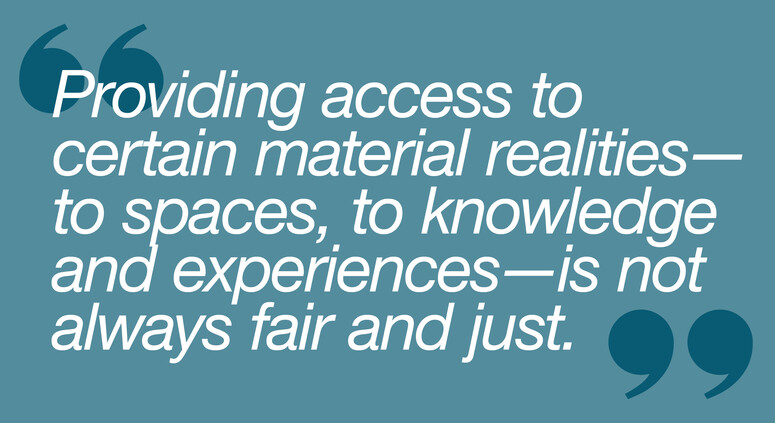interview with 2018 ADAA winner alena gelen (south africa)

28.01.2019 Editorial
Afro Indy Dandy, Alena Gelen, photography.
The 2018 Adobe Design Achievement Awards was a record-breaking year. The competition received the highest number of submissions to date, ending with 8102 submissions, 2454 semifinalists, and 64 honourees and 14 winning projects. Of the 14 winning projects, ico-D took the time to interview and get to know Fine Art: Photography category winner Alena Gelen — currently a student at Educational Member, Stellenbosch Academy of Design and Photography in Cape Town, South Africa.
The interview touches upon Alena Gelen's experience with the Adobe Design Achievement Awards and during her attendance at Adobe MAX as a winner. We also talked about her blooming career in photography, where she found her start in the medium and where she hopes this may lead her.
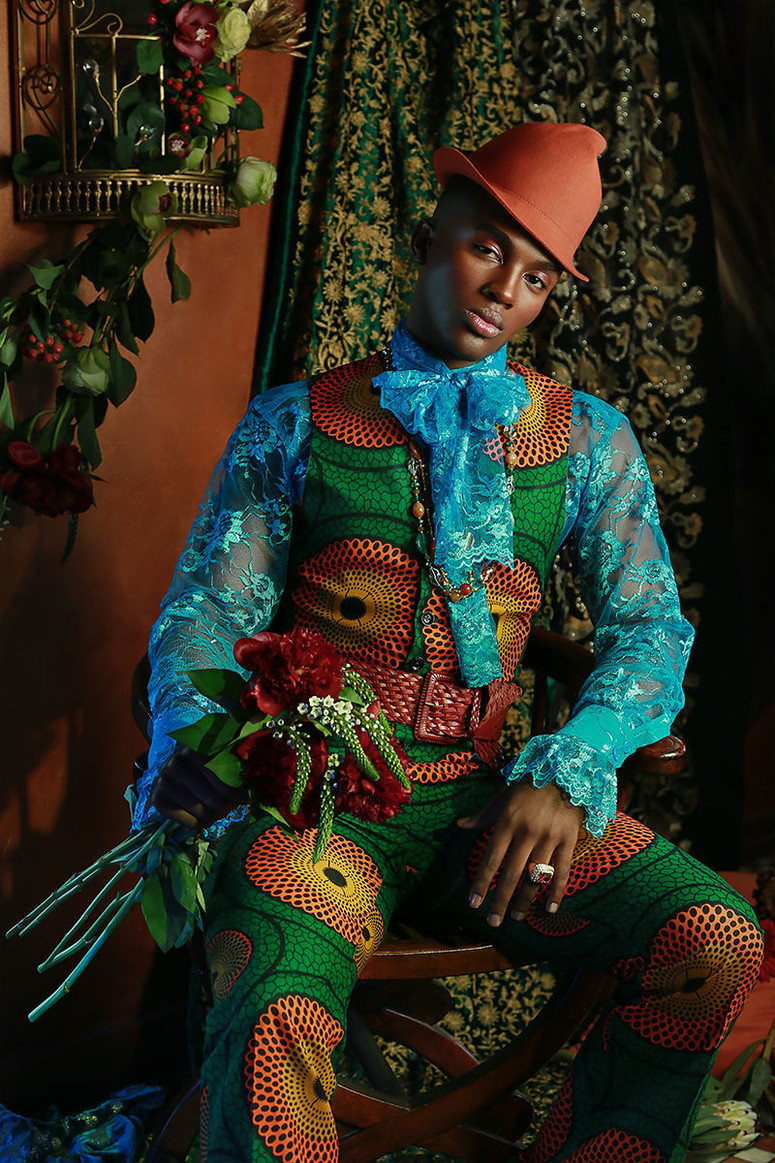
Afro Indy Dandy, Alena Gelen, photography.
ico-D: So first off, I have to ask how the whole Adobe MAX experience was for you as an ADAA Winner, and meeting the other 2018 winners?
Alena: The whole Adobe MAX experience was truly fantastic! It has greatly inspired me and helped to define the future direction of my creative and professional development.
And of course, visiting Adobe MAX as an ADAA winner was a great honour. For me, it felt unusual to realise that, together with the other 2018 winners, we have become the trendsetters and a source of inspiration for other young creatives. And we had an unforgettable time in Los Angeles.
It’s hard to underestimate the value of spending time with other ADAA winners. It was amazing to get first-hand insights from the best young creatives working in (at least) 14 different creative disciplines coming from all parts of the world!
ico-D: Its been over a month since Adobe MAX 2018 came to an end, what new ways has the ADAA and MAX helped your professional career?
Alena: Winning ADAA made me confident that I’m going in the right direction. Now I know that whatever my life circumstances are, I will continue to create personal projects, as not only myself, but that now other people see value in them.
Adobe MAX’s experience made me seriously think about my mission as a visual communicator and artist. It helped me understand what I really want in life and how I see my work in the future. The result is that after coming back to Cape Town, I’ve dared to continue studying and that will be multimedia designs! When I’m saying that I’ve “dared” to study multimedia I mean it; I’m a proactive type of person who finds a creative solution by physically exploring the world. Despite the fact that I spent a lot of time doing professional image editing and retouching, computer design seemed to be very isolated from human life experiences. After visiting Adobe MAX I changed my opinion and saw the ways digital and human can be married together for improving life experiences. Of course, I’m not giving up photography! My plan is to continue working in the industry as a conceptual portrait and fashion photographer, and gradually merge my existing skills with other disciplines. I have great plans of experimenting with combining photography, filmmaking, 3D design and VR. Let’s see what happens in the near future!
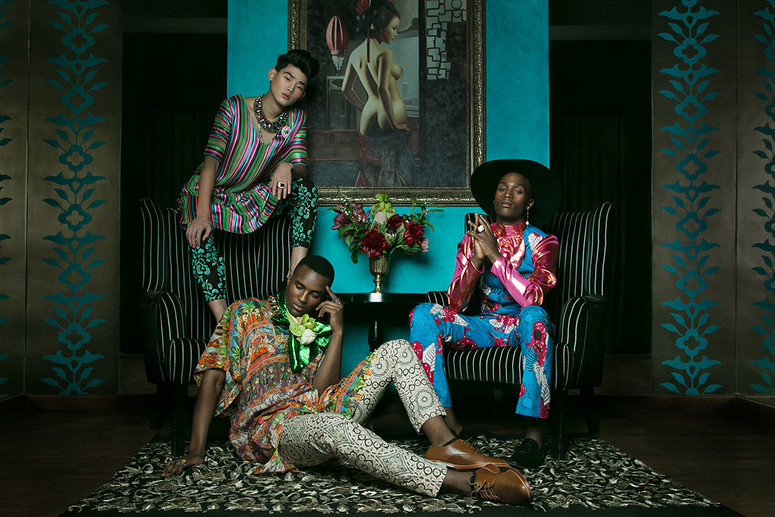
Afro Indy Dandy, Alena Gelen, photography.
ico-D: Your winning project, Afro Indy Dandy is a striking body of work. What was your initial inspiration for the series? And what steps did you take to make this work a reality?
Alena: This project truly unites so many things that I have been influenced and inspired by in my whole life: dance, music, fashion, cultural studies, traveling, portrait photography and a deep interest in a variety of human identity issues. I have always wanted to create conceptually and visually complex and sophisticated images that would show the way I see the world. When I got enough skills and experience, I’ve met the right people who helped me to make this dream the reality.
The idea to represent gender fluidity was in the air for a long time. I often work at fashion weeks and tried going to a variety of art-related events, where the majority of people are expressively gender fluid no matter what their sexual identity is.
The skill to mix cultural references came from my love of observing and analysing how cultures develop within the context of globalisation. Cape Town is the unique place where diversity is a real and very beautiful thing. I spent a couple of years just getting acquainted with the abundance of inspiration, observing how so many different cultures live together, develop and transform into a new form. However, I was hesitating to start this kind of project.
I was looking for an ethical way of representing and mixing cultures that I don’t originally belong to. This is why I was looking for another artist to collaborate with.
Finally, I met fashion Designer Hunter Blue. I spotted him at one of Menswear Fashion Weeks in Cape Town. His exquisite style, movements and reminded me of one of my favourite designers — John Galliano. And yet, Hunter owned his uniqueness and was like no-one else. He is a Tanzanian-born artist of Indian heritage, and all his life he mostly lived between Dar es Salaam and London.
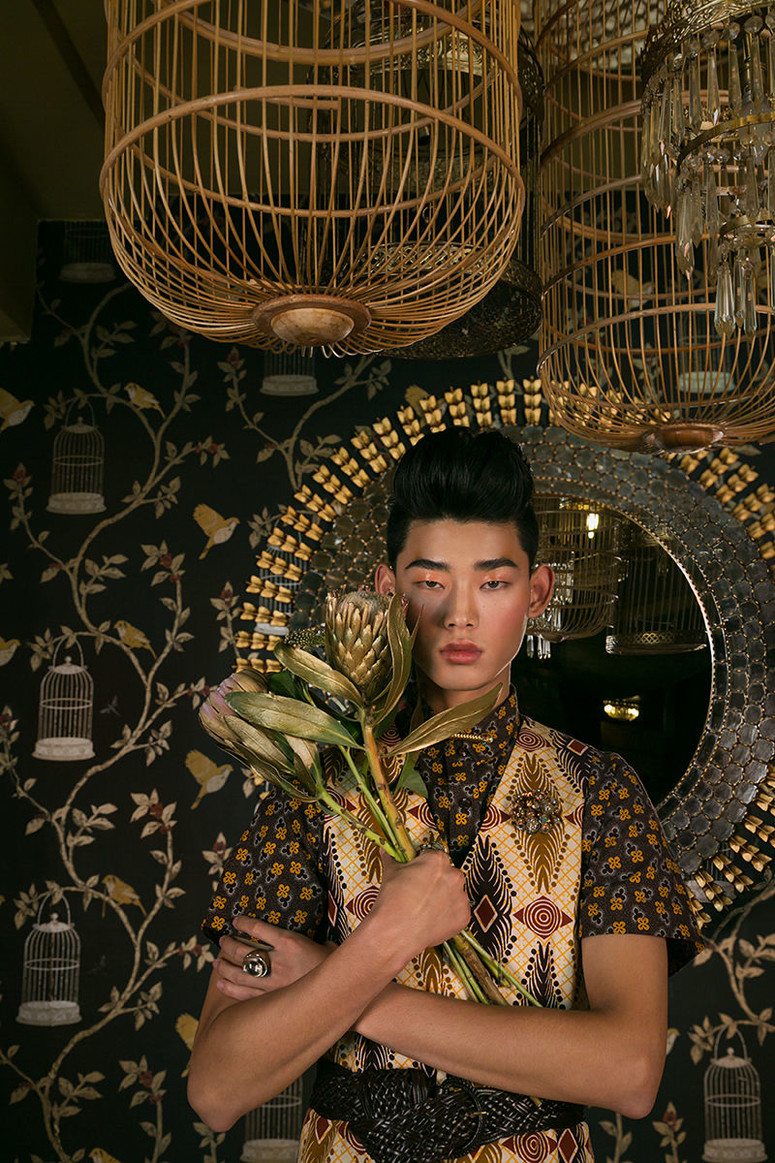
Afro Indy Dandy, Alena Gelen, photography.
Hunter himself became the inspiration and prototype for the Dandy character. I bless the universe for finding such a close friend and creative soul mate. We motivate and support each other a lot, (we) believe in one another, sometimes stronger than we believe in ourselves. After moving to live to Cape Town, Hunter created a fashion collection called Afro Indy Dandy, which was quite a self-narrative. When I saw these garments, I offered to do a project together. As I have mentioned before, for a very long time I was doing my research and collecting inspirations, and that was the moment when it all came together. The Afro Indy Dandy character was the very decent story to tell. My role was to come up with the way of representing this story in a photographic series.
One of the ideas was to reference Renaissance and Baroque paintings. It was intended to show that Dandyism originally comes from Western culture. And yet, we had to show that after being brought to the countries that used to be European colonies, the concept was acquired and retransformed, becoming self-sufficient and unique. I love this interplay of concepts and ideas traveling the world and obtaining new shapes and meanings. I know that cultural exchange goes very closely with issues of cultural appropriation, but this is the different thing, not relevant to this particular series.
Another important step was putting together a team of passionate and professional creatives. I have to draw your attention to the fact that originally this series was never planned to be categorised as Fine Art. We just wanted to create a beautiful and meaningful fashion story. However, everybody on the team took it very seriously and together we created a masterpiece.
For example, this is how we went about bringing Renaissance and Baroque references to life. I created setups with many light sources directed against reflectors and only used fabrics to tint the lights to the desired colour shade. The makeup artist literally painted the characters on the models’ faces. The florist spent several days ordering flowers of particular colour shades and shapes. Hunter not only styled the models but also brought his stunning collection of Indian fabrics to decorate the setup. Being a small team with limited resources, we had to deal with a lot of obstacles during production. We made the whole series in one day. The location was a shabby little bar so that I had to fix the floor tiles and draw by hand the missing parts of wallpaper in post-production. However, the incredible level of dedication of the whole team truly made this series unique.
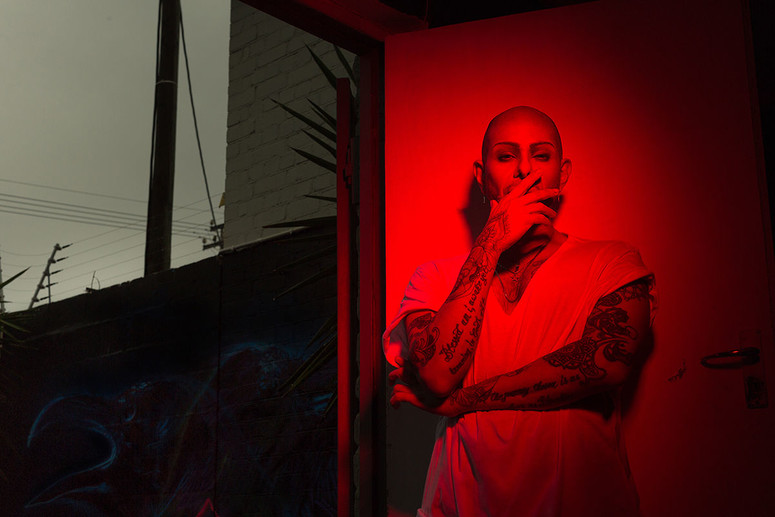
Hunter So GAY, Alena Gelen, photography.
ico-D: How does it make you feel to be a part of a winning entry with a strong social message? In which ways do you relate to this piece?
Alena: Winning ADAA gave me strong confidence in what I am doing and I am going to continue for love or money. Afro Indy Dandy was my first successful project after many failures. It was the first time when aesthetics and subject matter were on a high level. Completing it became the turning point in my development and inspired me to bring to life my other ideas.
ico-D: Listening to you speak about yourself and your work in the Adobe Awards Winner Interviews on Adobe Live, you mentioned that you are a self-taught photographer. That's quite impressive! In hearing that, I wanted to ask you how you first got started in photography? Did you have any role models that you looked up to, or that influenced your work?
Alena: Yes, I’m really a self-taught photographer. It took me a long time to find myself in life. Actually, I never thought of becoming a photographer. It's more accurate to say that I was looking for a creative profession that would allow me to unite my all-around interests and talents for creating something valuable and inspiring for myself and other people.
Probably, to better understand, I should shortly share my backstory.
Since an early age, I was attending dance, music and art schools, as well as many other hobby clubs, and I try to do it now when I have time. This allowed me to explore myself in different disciplines.
When I started traveling I got deeply interested in cultures. Traveling even inspired me to choose to study Intercultural Communication for 5 years at a university in Russia. Moreover, up until varsity I lived in Kazakstan, where people share Eastern, Western and Russian cultures. Now, looking back I understand that multiculturalism was a natural environment since childhood. These facts determined my deep interest in a variety of identity issues.
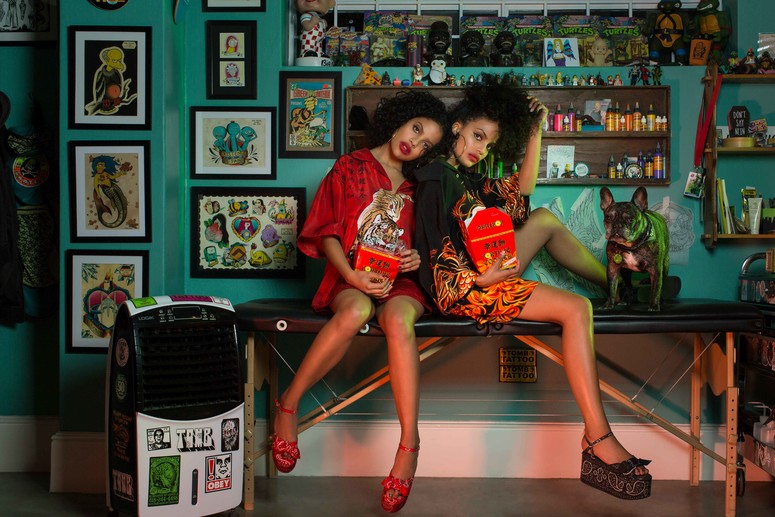
Freak Out! # PanAsia, Alena Gelen, photography.
I fell in love with the world of fashion after doing a few summer “study abroad" programmes at the London College of Fashion. There I did courses in fashion design and merchandising.
By the time I graduated from my first university, I realised that I didn’t want a “safe office career” and had to find a way of pursuing the creative calling inside me. The decision to become a photographer came naturally because I felt very comfortable with that medium. I did a lot of travel photography and the camera gave me the opportunity to share my vision of the world. In 2013 there were no art schools or colleges where I could study photography on a professional level in Kazakhstan, nor in Novosibirsk. There were a few places in St. Petersburg and Moscow, but I didn’t feel related to them for many reasons. So that my way of learning was through online courses and attending workshops of other photographers. I developed quite fast and was freelancing as a multi-purpose lifestyle, wedding and portrait photographer. It was fun, but I got depressed from the lack of meaning in the work I did. It wasn't giving me the opportunity to explore my full potential.
The biggest influencer and role model has become a famous Moscow based photographer Ilya Rashap. His week-long workshop has become life-changing for me.
He was the first photographer I’ve met who started the course from introduction into the art history and explained the importance of the concept. He taught me to paint with the light. The majority of educational resources explain how to use light but rarely go deeper than breaking down some technical issues. Rashap explained the logic behind using light which I still use up until now. He's taught me to think with the help of light. Thanks to him I stopped being afraid of the technical side of photography and now can light direct a scene with one or 20 light sources. He also introduced me to a high-end light producing brand Broncolor. All in all, this person inspired me so much, that I sold out my apartment, bought a smaller place and saved money to invest into my own Broncolor outdoor light kits, which I still use. This product changed my technical and artistic development 180 degrees. Later, by life accident, I happened to visit Cape Town, where I stayed to study Visual Communication to fulfill the dream of creating my own meaningful images.
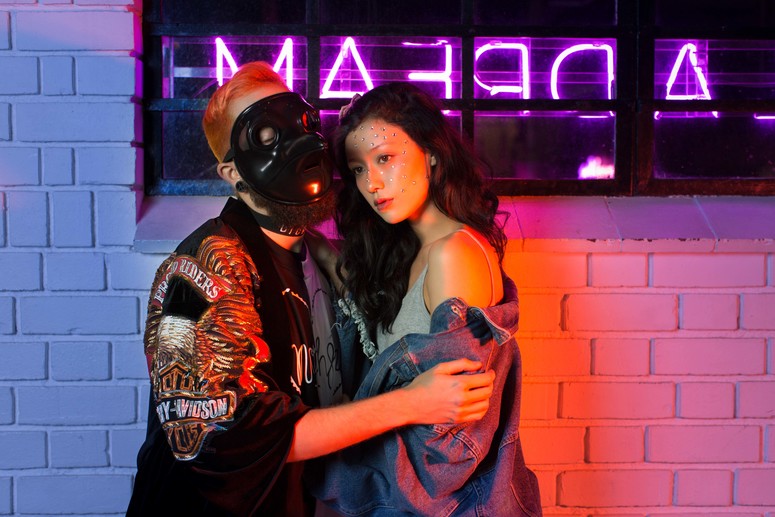
Freak Out! # PanAsia, Alena Gelen, photography.
ico-D: What sort of camera did you first start off with? Is it the same one you use today?
Alena: I’ve started with a small compact Canon camera. I enjoyed doing travel photography with it until it was stolen. On my 22d or 23d birthday my parents bought me Canon 7D as a present. This camera had a lot of professional settings and made me take photography more seriously. Now I use Canon 5D Mark IV and rent out Hasselblad for some projects. However, I believe that lenses are more important than the camera body. I’m addicted to prime lenses (with the fixed focal length) and my first investment was 50mm F1.2. I still use it a lot!
ico-D: As a self-proclaimed perfectionist, what does your process look like, from start to finish? Where do you first go for your initial idea, and what steps do you take to achieve a final product that you're happy with? Do you conduct any research before a shoot?
Alena: I ask a lot of questions: “why?” mainly, try to be attentive to details and have natural desire to make work the best way I can. But I don’t try to be unnecessarily in control of everything. On the contrary, very often I love using experiment as my key method. I love the healthy balance between hard work and trusting the momentum.
I always do research, no matter if it’s a personal project or a client’s brief. Some people mistakenly assume that researching is boring. On the contrary, I can tell that research is an amazing source of inspiration, you just have to be creative about that. Research includes reading, watching, listening, interacting with people and places, experimenting and so many more fun things.
In other words, it means being curious about things and being responsible for ideas that you express.
I also try to keep a visual journal. A collection of random ideas sometimes come together in a beautiful concept. It even can be very helpful for unplanned and fun shoots, because your brain remembers about the right reference at the right moment.
I really love going out into the world and explore. I try to keep my eyes wide open, notice details and be surprised by even familiar things. I’m the type of person who is deeply in love with life and people, this is why living experience is very important for me.
The steps I take to achieve a final product depends on the project. I can firmly say that I am a team player, and, I try to put together the right team who share similar ideas. At the moment I have three projects that I've work on: Dandy, Freak Out! and Dreamer.
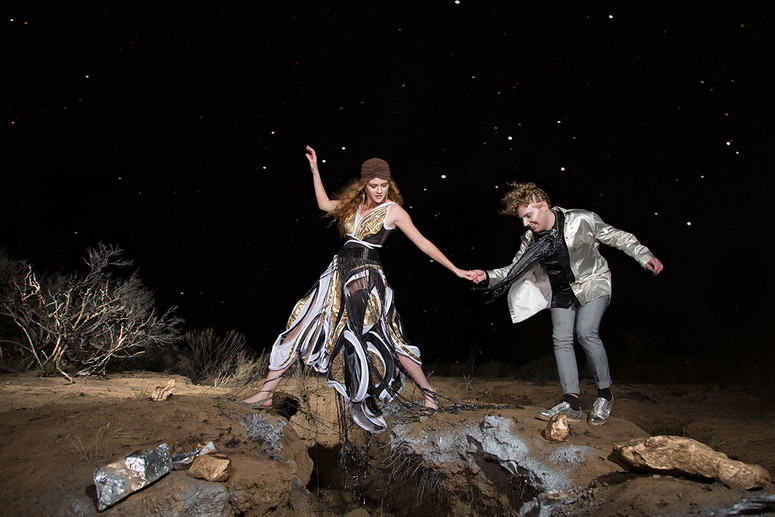
Dreamer, Alena Gelen, photography.
All the projects explore identity, but they are absolutely different in themes and styles. Every project has its own team of people, and together we co-create. I am the “brains” of these projects, I direct and watch that everything is made up to the desired standard. At the same time, I trust my team and give freedom for interpretation and self-expression. For example, in Freak Out! # PanAsia edition we even had an agreement between myself, stylist and makeup artist that we wouldn’t interfere in each others’ work. The result was stunning! But this is only possible in a team with good synergy and mutual understanding. This is why I try to keep the core of the team unchanged, as achieving synergy in a team takes a lot of time.
ico-D: With your talent and skill always evolving, what sort of advice would you have offered your past self?
Alena: I just want to thank myself for taking so many risks in order to get where I am now. So many times people would tell me to calm down and live a “normal” life. And every time when I failed, I felt so guilty for “wasting” my life and was about to give up. Now, I’m so grateful to my past self for having kept on going. To be very honest, I doubt that my current self would dare to make decisions I had been taking before. I'm still only at the beginning of my journey, and probably it might sound very cliché, but the all-time universal advice is to dare to follow your heart and never give up.
To view more of Alena's work, be sure to visit our Instagram account @theicod where she will be conducting a two-week takeover starting 01 February 2019.
—
LINKS
General Information on the Adobe Design Achievement Awards
The Official Adobe Design Achievement Awards Webpage
2018 ADAA: Words of advice for young designers
For any Adobe Design Achievement Award related inquiries, contact Programmes Manager, Marnie G.-Vitullo at programmes@ico-d.org
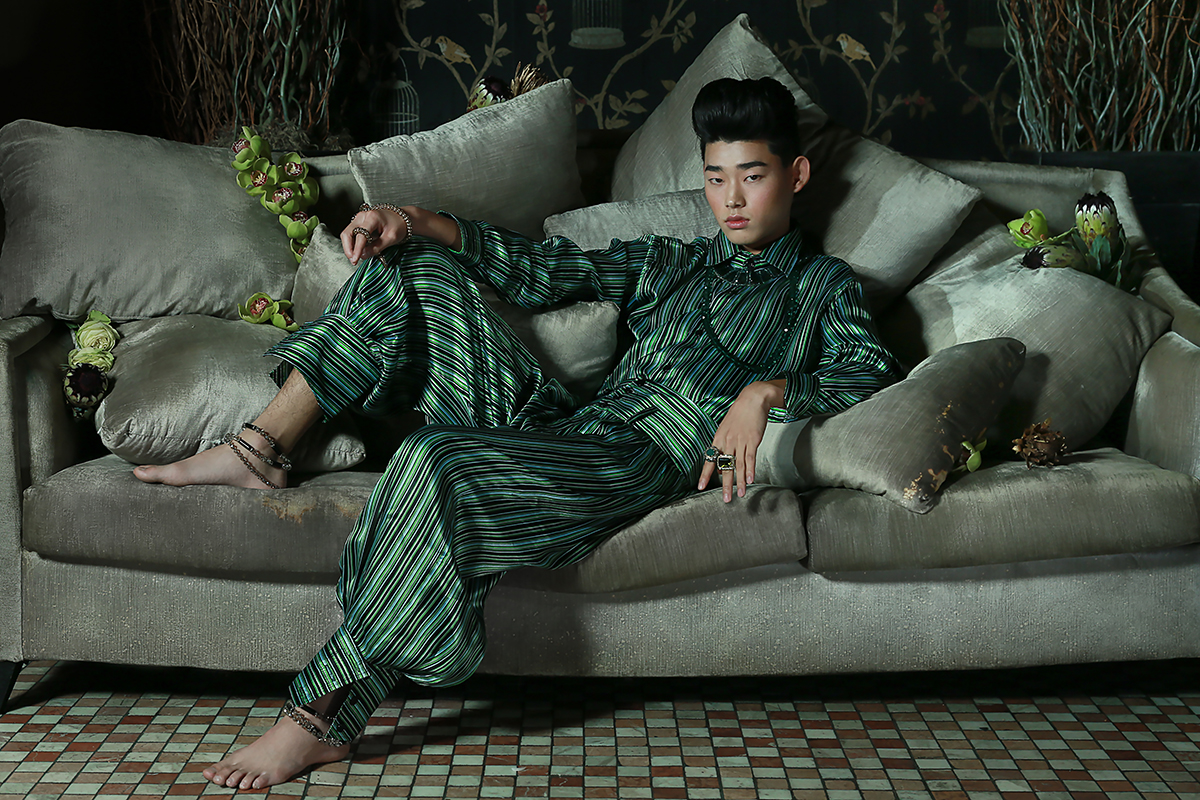
relatedarticles
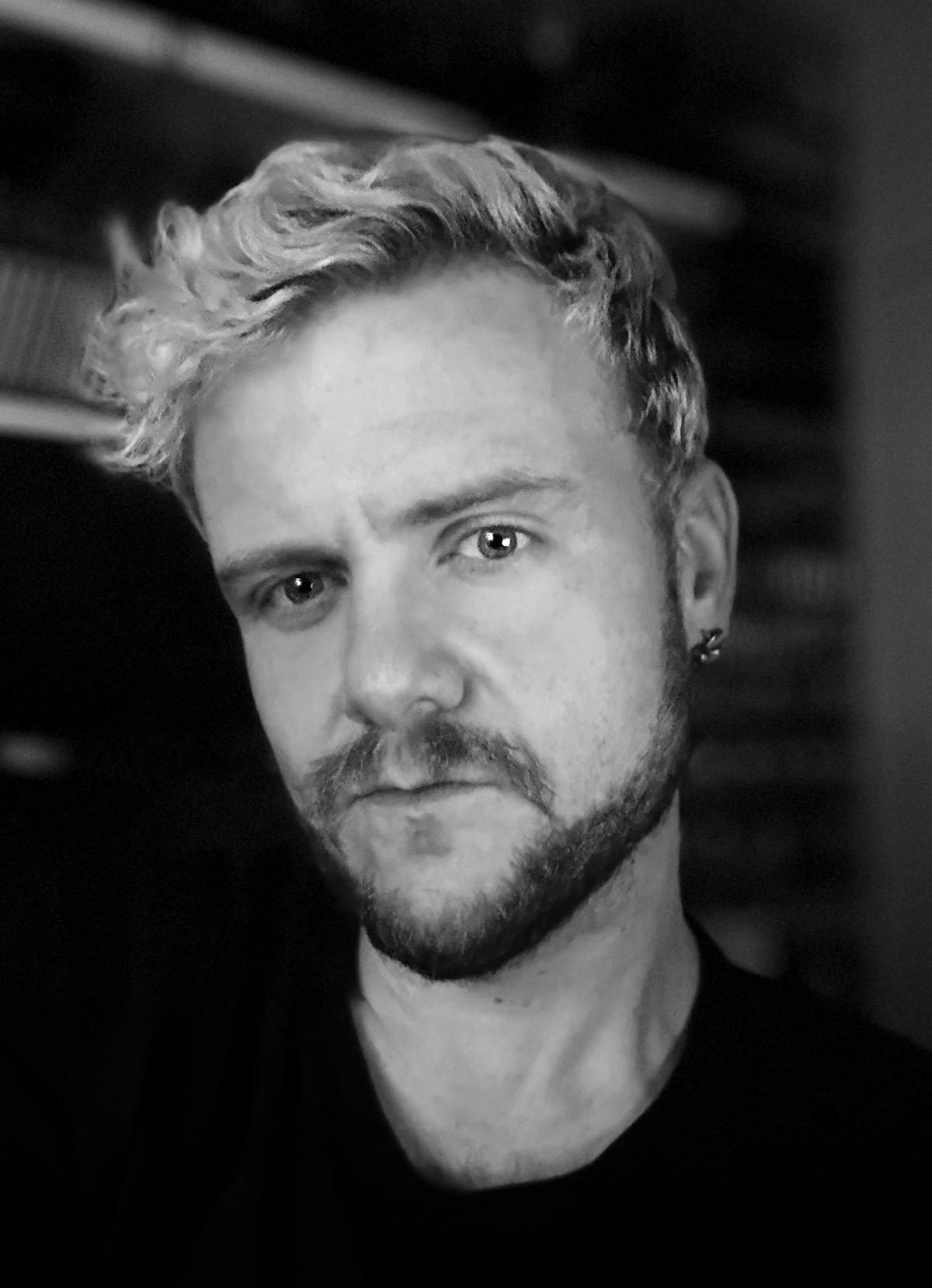
ICoD exclusive interview with kyle rath on design and AI
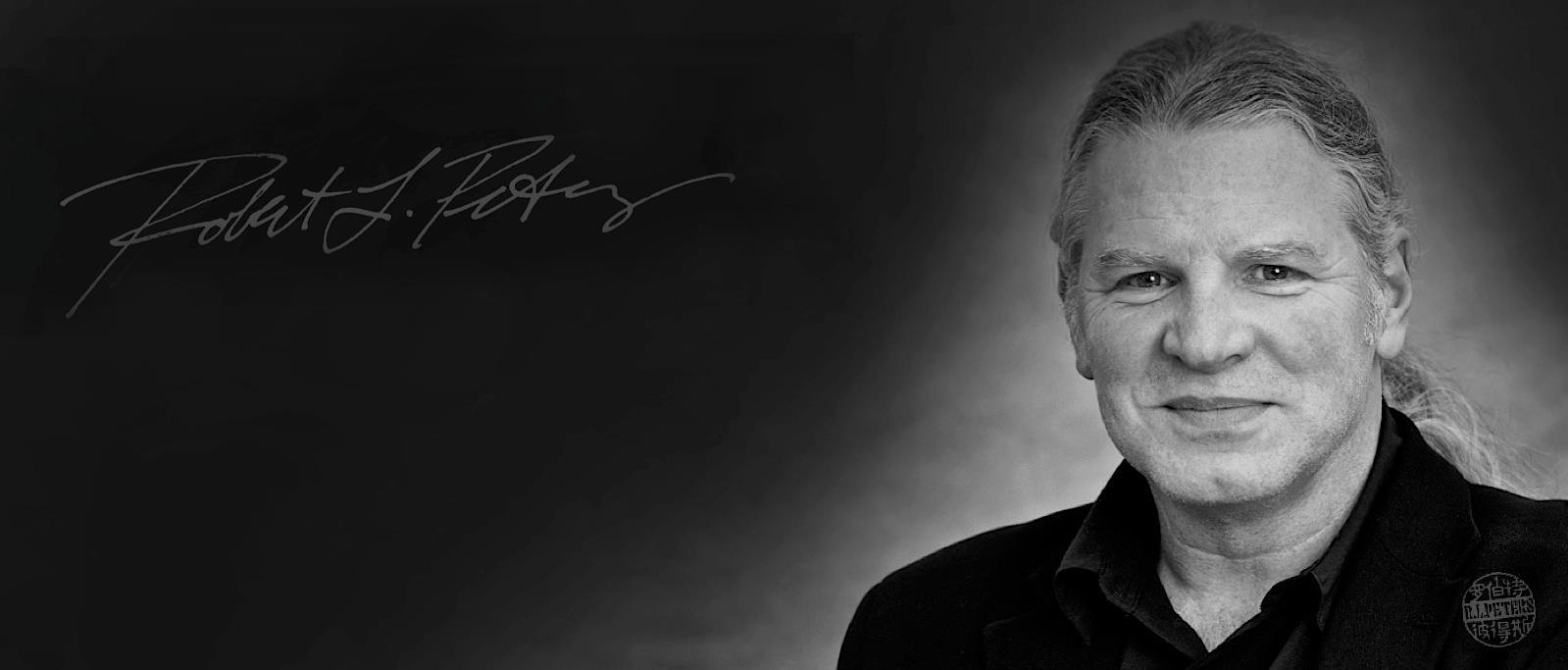
robert l. peters: guiding the future of design
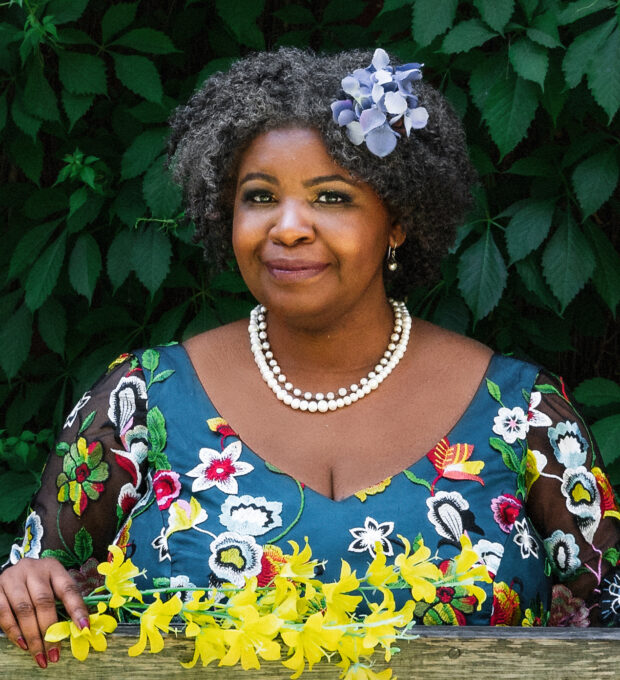
ICoD interviews elizabeth (dori) tunstall on decolonising design
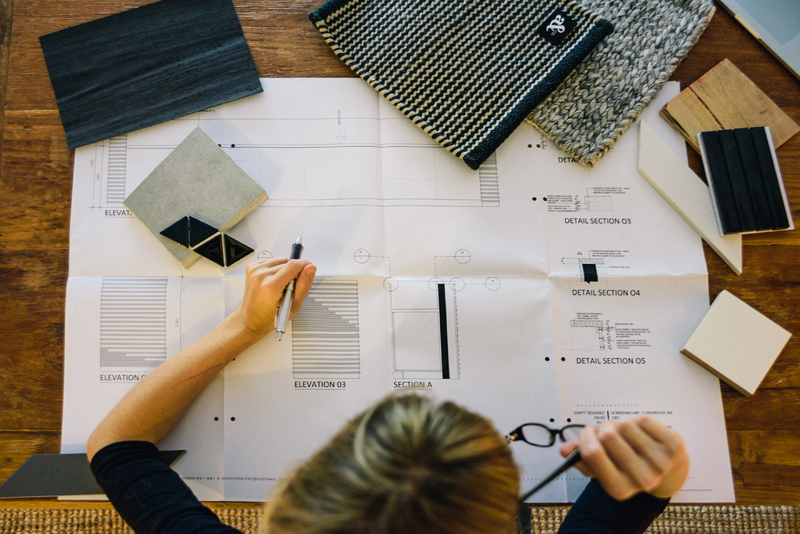
it may look good on instagram but you want to enjoy living in it
